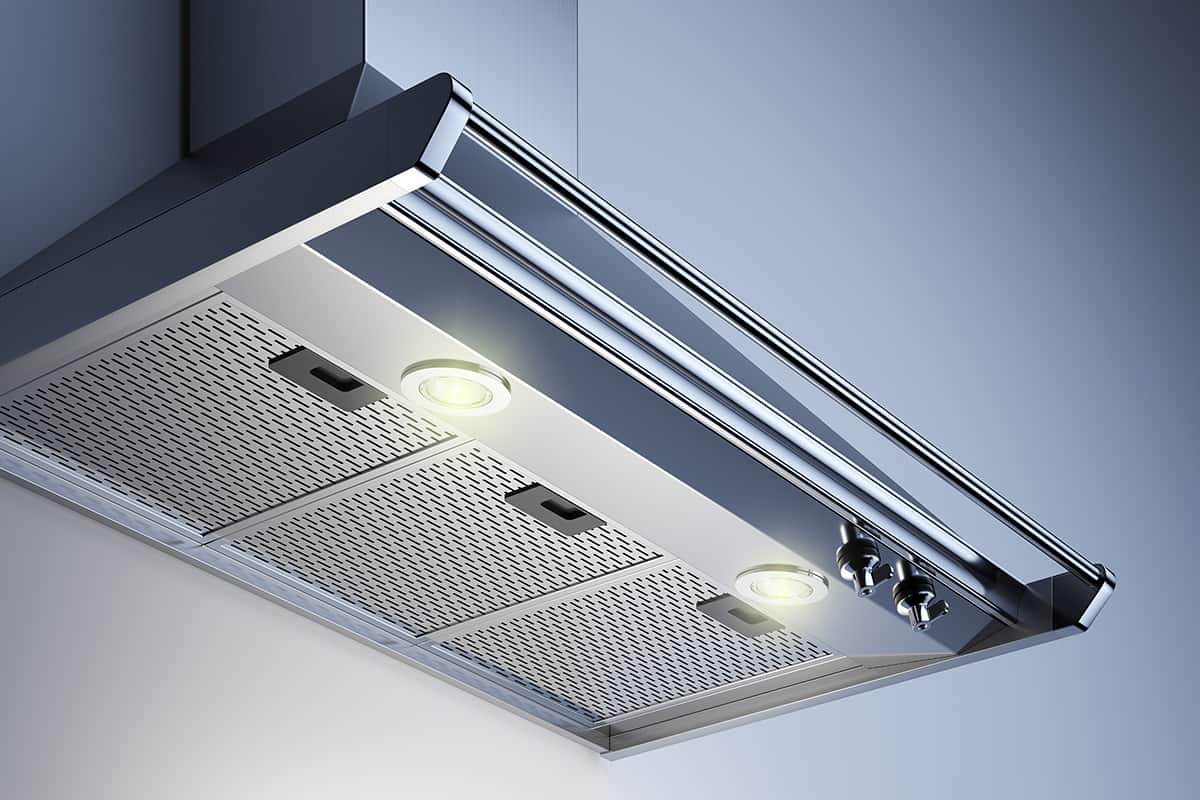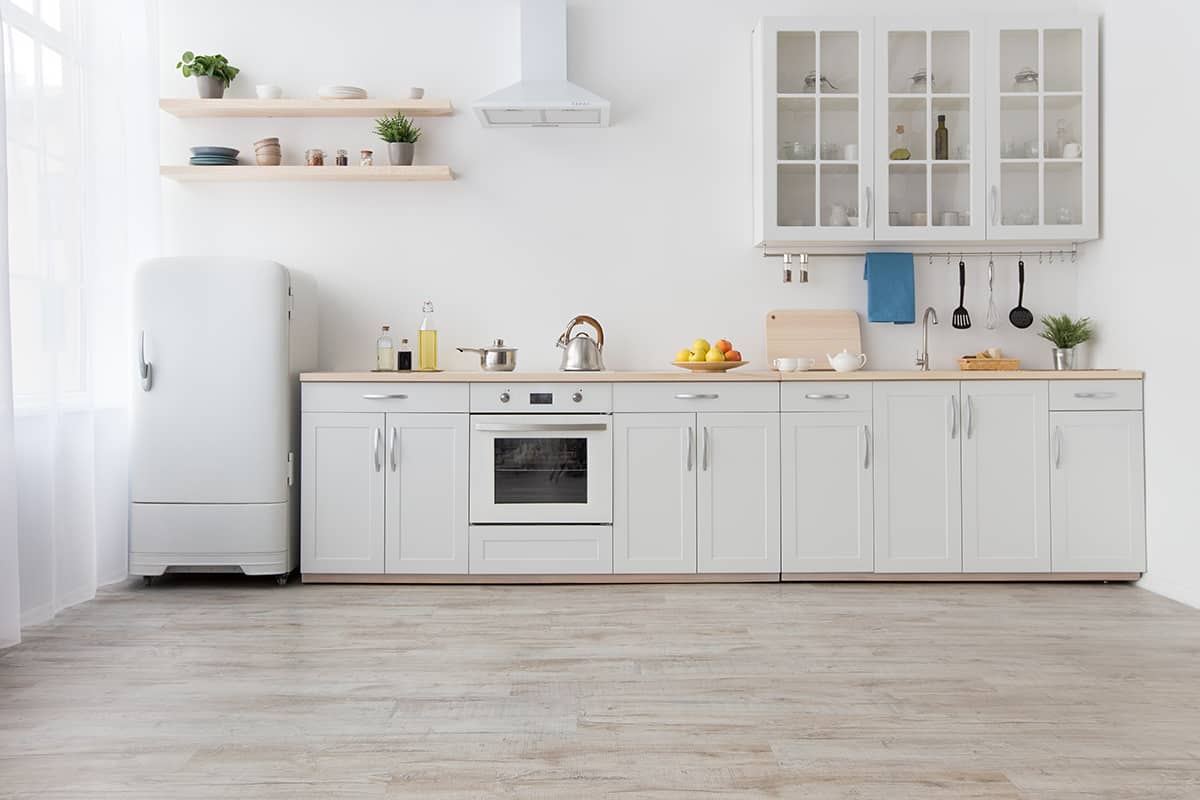In a small home or apartment kitchen, you don’t have very much wiggle room when deciding where to place your appliances. So, you should do the best with what very little you have, which also includes deciding on where to safely place the fridge. For instance, is it okay to place your fridge right next to a stove?
While it’s technically safe to place a fridge and a stove next to each other, it’s not advisable. The stove’s heat can interfere with the cold temperatures of the fridge, forcing the compressor to work double-time in order to maintain a consistently cool temperature. If you have no choice, place a heat shield between the appliances.
In this guide, I’ll explain why refrigerators and stoves don’t belong next to each other, what you can do when you’re forced to place a fridge next to a stove, and the best practices for proper kitchen appliance placement.
Can You Place a Refrigerator Next to a Stove in the Kitchen?
If you recently moved into a new home or purchased a brand-new fridge or stove, you’re probably wondering where your kitchen appliances should go. It’s good that you sought out the answers before installing everything without thought since there are a few key things you should try to avoid.
For instance, while it’s not recommended, you may place a refrigerator beside a stove and vice versa. This is usually reserved for small kitchens—if you have nowhere else to place your fridge, then it’s possible to be next to the stove! That said, you should do your best to leave as much space between the two appliances as possible.
What Happens When You Place a Fridge Next to a Stove?

If everything goes well, then absolutely nothing will happen in your kitchen. After all, both appliances are fitted with all sorts of insulation and safety materials that prevent heat from transferring to adjacent objects.
However, this is the ideal outcome, and if I’ve learned anything in the kitchen, it’s that you should never expect anything to turn out ideal.
What you should know is that fridges and stoves serve completely different purposes. Stoves use heat to raise the temperatures of pots, pans, and food. Fridges, on the other hand, do their best to absorb heat from within and blast it out through vent ports.
When you place a hot object (stove) next to a cool object (fridge contents), then chaos may ensue. The stove’s heat may transfer to the outside of the fridge, causing the compressor to have a false heat reading and forcing it to work overtime to distribute the refrigerant throughout the internal coils. When this happens, you put the compressor at risk of premature wear and tear, possibly leading to costly repairs or broken parts.
Another less-than-ideal-yet-not-as-terrible outcome of placing a fridge next to a stove is the mess. Soup stains may bubble out of the pot and land on the side of the fridge. The liquid may drip down to the floor, and you’ll have to move your fridge or stove to the side to clean up the mess.
How Much Space Between Refrigerator and Stove
Even before you purchase a new fridge or stove, you should learn your city or county’s building codes. The codes will inform you of how close you can place a fridge next to a stove.
Some places require at least 20 inches of space between a fridge and a gas stove. Refrigerators and electric stoves can be as close as 2 inches apart.
Apart from city-mandated safety regulations, you should also consider the convenience factor of kitchen appliance placement. People tend to move a lot around stoves, and the open door of a fridge can severely limit your range of movement. Also, you need to consider whether or not other appliances will get in the way of your pots and pans, especially when their handles jut out beyond the stove’s front panel.
With all that said, it’s generally advised that you leave at least 12 inches of clearance between fridges and gas stoves and 9 inches between fridges and electric stoves, but the wider the gap, the better off you’ll be.
How to Safely Place a Refrigerator Next to a Stove

As explained earlier, it may be safe to place a fridge next to a stove and vice versa. The main thing you have to keep in mind is how you are going to prevent heat from transferring from one appliance to the other.
Usually, there will be a cabinet or empty space between the 2, but if that’s out of the question, there are a couple of things you can try to keep your stove from destroying your fridge.
1. Heat shields
A heat shield is made of insulating materials. They come in a variety of shapes, including small mats for placing hot pots on top of countertops or tables. For a stove, look for a tall heat shield that’s thin enough to place between it and the fridge.
Heat shields are not a failsafe solution for the problem of heat transfer. At best, they can reflect up to 90% of radiant heat. The best thing you can do is look for a heat shield that’s as tall and slightly wider than your fridge. That way, you can block most of the heat from penetrating the fridge’s side wall and backside.
You can find heat shields in all sorts of shapes and sizes. The thicker, the better, but it should still fit between the tiny crevice between your fridge and stove. You can even use something as simple as plywood or MDF panels if you’re in a pinch.
2. Range hood
Another thing you can try is using a range hood. This appliance improves the air quality in your kitchen by suctioning heat and vapor and either filtering them through fine-mesh screens or tossing them outdoors.
Whenever you want to cook something on the stove or oven, simply turn the range hood on to its highest power setting. This will prevent steam from going all over the place and potentially causing damage to the side wall of your fridge.
In terms of range hood sizes, larger is almost always better. However, you should know the size of your stove and the empty space between wall cabinets before purchasing a range hood. Here’s a guide that’ll teach you everything you need to know about range hood dimensions.
Best Practices for Kitchen Appliance Placement
You are more than welcome to design your kitchen’s layout however you see fit. That said, there are a few things you should know before permanently fixing certain appliances in place.
In general, your dishwasher/sink, stove, and refrigerator should be positioned in somewhat of a triangle. That way, you’ll have an even walking distance to either of the adjacent appliances where you are. Much of the time spent in a kitchen is spent in front of these 3 things, so the less walking you have to do to get from one to the other, the better.
But what if you live in an apartment with a small kitchen? And what if you can only decide where to place the fridge?
If this is the case, keep the fridge as far away from the stove as possible. Also, make sure that swinging the refrigerator doors open doesn’t cause them to don’t collide with nearby objects, especially the stove and sink. Again, use a heat shield if your kitchen doesn’t offer a lot of wiggle room between the stove and fridge.
Now that you know whether to place a refrigerator next to a stove, you may also wonder how much space between the stove and cabinet is.






